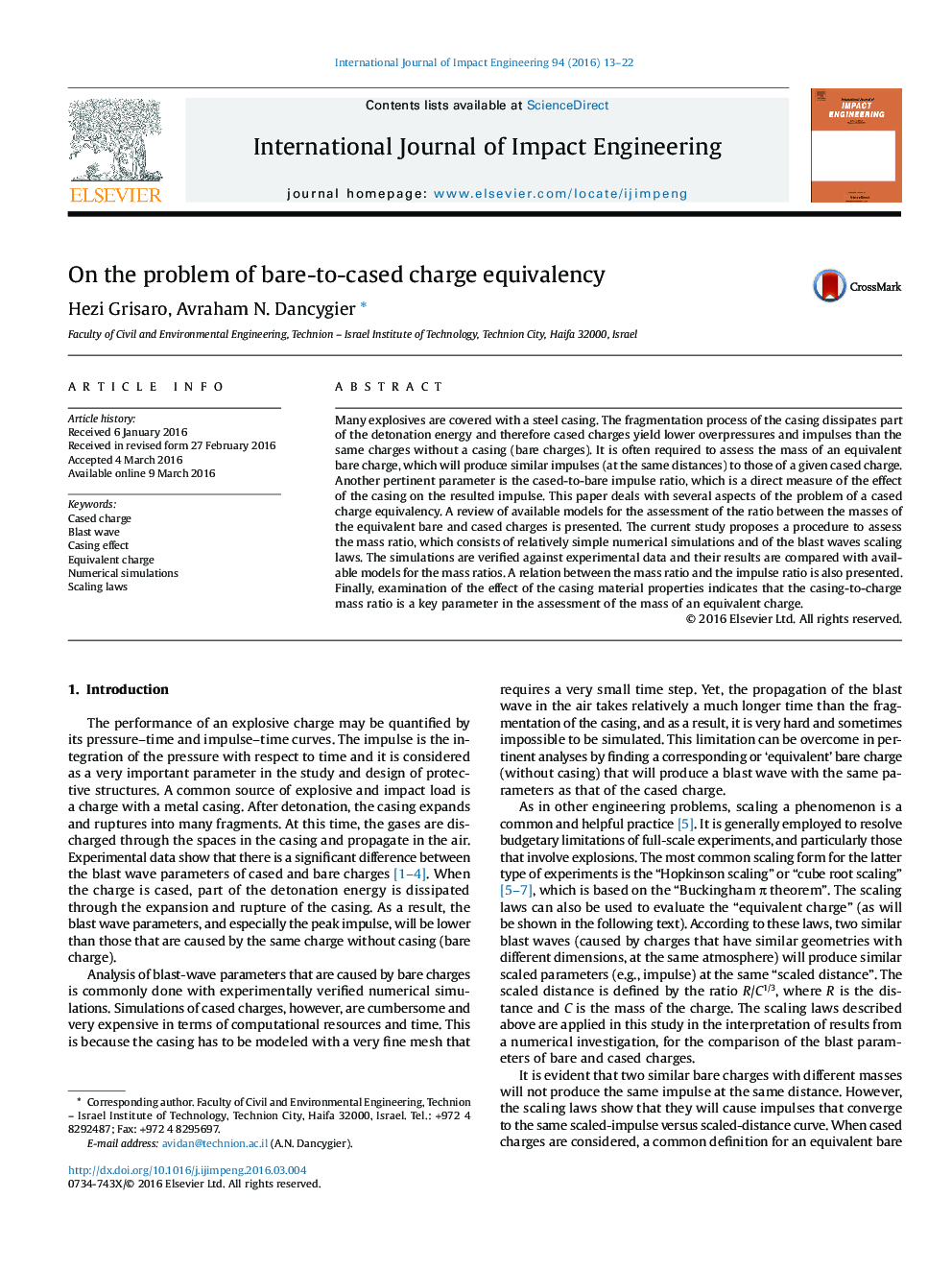| Article ID | Journal | Published Year | Pages | File Type |
|---|---|---|---|---|
| 782705 | International Journal of Impact Engineering | 2016 | 10 Pages |
•Cased charge yields lower impulses than the same charge without a casing.•An equivalent bare charge (EBC) is used for the assessment of cased charge impulse.•A numerical procedure is proposed to evaluate the mass of an equivalent bare charge.•A relation between the bare-to-cased masses and impulses ratios is presented.•The casing-to-charge masses ratio is a key parameter in assessing the EBC mass.
Many explosives are covered with a steel casing. The fragmentation process of the casing dissipates part of the detonation energy and therefore cased charges yield lower overpressures and impulses than the same charges without a casing (bare charges). It is often required to assess the mass of an equivalent bare charge, which will produce similar impulses (at the same distances) to those of a given cased charge. Another pertinent parameter is the cased-to-bare impulse ratio, which is a direct measure of the effect of the casing on the resulted impulse. This paper deals with several aspects of the problem of a cased charge equivalency. A review of available models for the assessment of the ratio between the masses of the equivalent bare and cased charges is presented. The current study proposes a procedure to assess the mass ratio, which consists of relatively simple numerical simulations and of the blast waves scaling laws. The simulations are verified against experimental data and their results are compared with available models for the mass ratios. A relation between the mass ratio and the impulse ratio is also presented. Finally, examination of the effect of the casing material properties indicates that the casing-to-charge mass ratio is a key parameter in the assessment of the mass of an equivalent charge.
